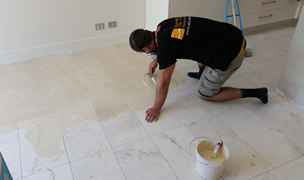If you want to know how to polish and restore stone properly, it helps to first understand how this type of polish works. While there’s no denying that the process itself is complicated and lengthy, there are in fact, four basic methods which are typically used for making that shine on stone floors last. These four basic methods include buffing, honing, grinding and polishing stones. The method you use for how to polish stone depends on how old your floor is and also what type of stone you have. For example, natural stone like slate is going to need a different method than flooring made from granite or marble.

When you learn how to grind wet stones properly you should also know how to remove mineral stains that may have occurred during the floor’s time of origin. This can be accomplished by using a grinding stone known as a hone-stone, which is basically a specialized honing stone which grinds the surface of the stone to make it smoother. You can also make use of abrasive materials such as steel wool, steel scrapers or other things which will help grind away excess mineral deposits left behind on the surface of the floor. Polishing the stones you’ve ground will also help bring out the luster the natural stone had when it was formed. On the downside, grinding stones can also be dangerous and if they are accidentally dropped or hit against something they can chip off.
Honing involves removing small amount of debris left behind by polishing stones, then coating the newly cleaned floor with a protective coating. This is usually a resin type product which is applied to the floor after the polishing is complete. There are a few different ways you can achieve the right level of shinyness by honing your stone flooring. One method is to actually drag the stone across the floor, while another method involves using a brush or roller to move across the floor in circular motion. There are a few things to watch out for though, as some types of flooring need to have some sort of barrier coating placed underneath it to protect it from damage when it is lifted.